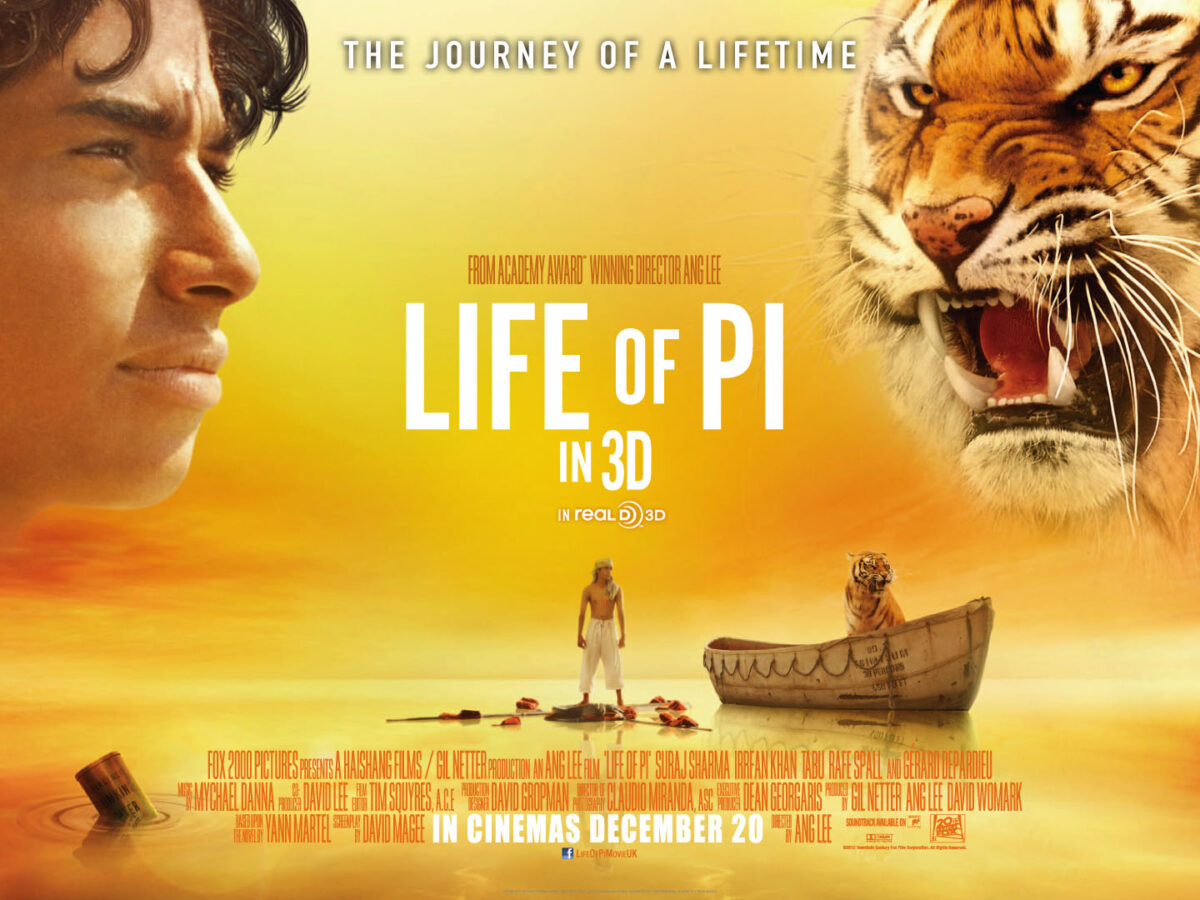Released in 2012, “Life of Pi” is a visually stunning masterpiece directed by Ang Lee, based on the best-selling novel of the same name by Yann Martel. This epic adventure-drama film takes viewers on an extraordinary journey of survival, faith, and the indomitable human spirit. With its captivating storytelling, breathtaking visuals, and profound themes, “Life of Pi” has left a lasting impact on audiences worldwide. In this comprehensive review, we delve deep into the intricacies of this cinematic gem, exploring its narrative, performances, visual effects, and overall impact.
Plot Summary:
“Life of Pi” follows the incredible story of Pi Patel, a young Indian boy who survives a shipwreck and finds himself stranded on a lifeboat in the Pacific Ocean. Accompanying Pi on this perilous journey are a Bengal tiger named Richard Parker, a zebra, a hyena, and an orangutan. As the sole human survivor, Pi must navigate the challenges of the open sea while forging an unlikely bond with the ferocious tiger. Through his ingenuity, resilience, and unwavering faith, Pi embarks on an extraordinary voyage of self-discovery and survival amidst the vast expanse of the ocean.
Themes:
At its core, “Life of Pi” explores a myriad of profound themes that resonate deeply with audiences:
- Survival and Resilience: The film showcases the human capacity for survival and resilience in the face of adversity. Pi’s unwavering determination and resourcefulness in the most dire circumstances exemplify the triumph of the human spirit.
- Faith and Belief: Through Pi’s spiritual journey, the film explores the power of faith and belief in sustaining hope and providing meaning in life. Pi’s adherence to multiple religions reflects his quest for spiritual enlightenment and inner peace.
- Nature and Humanity: “Life of Pi” delves into the complex relationship between humanity and the natural world. The bond formed between Pi and Richard Parker symbolizes the interconnectedness of all living beings and the inherent struggle for survival.
- Truth and Perception: The film challenges notions of truth and perception, inviting viewers to question the reliability of Pi’s narrative and the nature of reality. The ambiguity surrounding the story’s conclusion sparks contemplation about the subjective nature of truth and the role of storytelling in shaping our understanding of the world.
Visual Effects:
One of the most remarkable aspects of “Life of Pi” is its groundbreaking visual effects, which seamlessly blend CGI animation with live-action footage to create breathtakingly realistic scenes. The film’s stunning portrayal of the oceanic environment, majestic wildlife, and fantastical elements captivates viewers from start to finish. From the awe-inspiring beauty of bioluminescent waters to the heart-pounding intensity of stormy seas, every frame is a visual spectacle that transports audiences into Pi’s mesmerizing world.
Performances:
The success of “Life of Pi” is further elevated by the exceptional performances of its cast:
- Suraj Sharma as Pi Patel: In his debut role, Suraj Sharma delivers a captivating performance as the young protagonist, imbuing Pi with innocence, vulnerability, and resilience. His nuanced portrayal anchors the film and allows viewers to empathize with Pi’s emotional journey.
- Irrfan Khan as Older Pi: As the older version of Pi recounting his tale to a writer, Irrfan Khan exudes wisdom, depth, and gravitas. His introspective narration adds layers of complexity to the story, inviting viewers to ponder its deeper philosophical implications.
Directorial Vision:
Ang Lee’s masterful direction is evident throughout “Life of Pi,” as he skillfully brings Yann Martel’s novel to life on the silver screen. Lee’s visionary approach to storytelling, coupled with his meticulous attention to detail, elevates the film beyond mere entertainment to a profound cinematic experience. Through his deft use of symbolism, metaphor, and visual symbolism, Lee creates a rich tapestry of themes and imagery that resonates with audiences on a visceral and emotional level.
Critical Reception and Legacy:
“Life of Pi” received widespread critical acclaim upon its release, garnering praise for its innovative visual effects, compelling narrative, and profound themes. The film went on to win four Academy Awards, including Best Director for Ang Lee, Best Cinematography, Best Visual Effects, and Best Original Score. Its enduring legacy continues to resonate with audiences, inspiring countless discussions and interpretations about the nature of faith, survival, and the human condition.
Conclusion:
In conclusion, “Life of Pi” is a cinematic masterpiece that transcends genre conventions to deliver a profound and unforgettable viewing experience. Through its mesmerizing visuals, compelling storytelling, and profound themes, the film captivates audiences and leaves a lasting impression long after the credits roll. Ang Lee’s visionary direction, coupled with exceptional performances and groundbreaking visual effects, solidifies “Life of Pi” as a timeless classic that will continue to inspire and resonate with viewers for generations to come.
